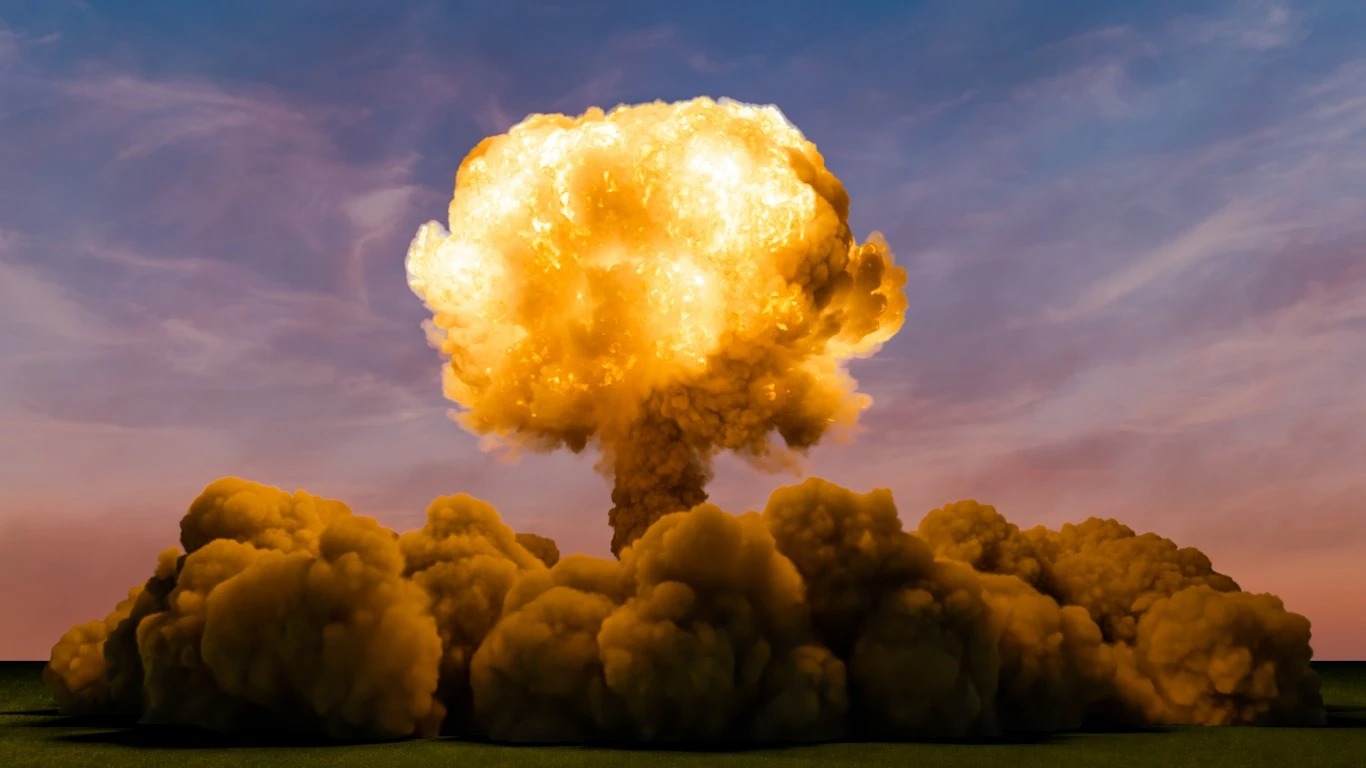
Russian president Vladimir Putin recently reiterated his threat to use nuclear force, should Russia be attacked. He has also repeatedly suggested that he might consider using smaller “tactical” nuclear weapons at targets in Ukraine. Since the end of the Cold War, the fear that a nuclear weapon could be used has diminished for many Americans, in part as both Russia and the United States have worked to reduce their arsenals. But the idea of a threatened Russia — especially in light of Ukraine’s recent counteroffensive — has caused some to seriously reconsider the possibility of a nuclear attack on the West.
Worryingly, the world’s nuclear arsenal will grow in the next few years for the first time since the Cold War, according to a recent forecast from the Stockholm International Peace Research Institute, a leading armaments and conflict watchdog.
While the U.S. and Russia have more than 90% of the world’s nuclear weapons, China is in the process of expanding its nuclear stockpile with the construction of more than 300 silos. (These are the countries that control the world’s nuclear weapons.)
Estimates vary in the number of nuclear weapons worldwide. The Federation of American Scientists estimated roughly 12,700 warheads as of early 2022, including more than 3,000 retired warheads.
The largest nuclear explosion ever detonated was the Soviet Union’s RDS-220, or Tsar Bomba, a 50 megaton hydrogen bomb. That test explosion took place over an Arctic Ocean island on Oct. 30, 1961. By comparison, the bombs dropped on Hiroshima and Nagasaki in August 1945 had a combined yield of about 40 kilotons. The Bulletin of Atomic Scientists puts the death toll from those bombings between 110,000 and 210,000 people.
To find what a nuclear attack would do to 23 world capitals (G20 nations plus Israel, North Korea, and Pakistan, which also have nuclear weapons), 24/7 Wall St. used Nukemap, a site that simulates detonation of nuclear bombs. We have chosen two typical warhead yields, the equivalent of 100 kilotons and 800 kilotons of TNT, detonated in the air over these cities. Countries are ordered alphabetically. For South Africa we have chosen Pretoria, the seat of the executive branch.
Today’s thermonuclear warheads provide an immensely more powerful punch than the ones used during World War II. A 100 kiloton bomb dropped on Capitol Hill would kill an estimated 177,650 people instantly and injure more than 383,210, with 21% of the Washington D.C.’s population in the blast range. An 800 kiloton bomb would kill or injure 1.3 million people, and nearly half of the population would be within the blast range.
The considerably larger Russian capital, Moscow, would suffer over 250,000 deaths if a 100 kiloton yield nuclear bomb detonated over the Kremlin. If an 800 kiloton were to be detonated, more than 1 million people would be killed and another 2.3 million injured.
The casualties would be much higher in more densely-populated cities. An 800 kiloton thermonuclear weapon dropped on the Chinese capital of Beijing would cause nearly 1.3 million deaths and nearly 3 million injuries. And such a bomb dropped on the Indian capital of New Delhi would kill 2.1 million people instantly and injure 5.8 million. (This is what a nuclear war would do to the world.)
Here is what a nuclear attack would do to a major global city
Click here to read our detailed methodology





